In June, the city of Basel becomes the most important trading market for artworks in the world. The most prominent art gallery representatives, collectors, curators and members of the press arrive at the city, not to mention a huge group of art lovers who flock there as eager visitors in hope to be able to admire works by the most famous art classics of the 19th and the 20th century, as well as by promising young artists which are gathered in a single place.
This is a real treasure hunt!

And literally everyone is involved in it. Some are hunting for the best artworks to expand their collections; others strive to establish contact with public institutions in order to find venues for future exhibitions of works by presented artists. There are people hunting for gossip and, finally, for the best #artselfie.

Art Basel 2016, photo Contemporary Lynx
The fair itself is quite clearly a commercial event. Trading in artworks is the basic goal of every participating gallery. Organizing a stand itself is extremely expensive and the costs do not end there. Galleries need to pay for preparation, transport, pay remuneration for their employees and cover the costs of their stay in Basel (hotels, restaurants, evening entertainment). All these costs add up to give a total cost that galleries have to bear, which means that the same amount of money has to be earned at the fair in order to make participation profitable (we do not take into account the invaluable promotional aspect of being present at this event).
Almost every owner of a participating gallery dreams of at least meeting the break-even point when the fair finishes. The financial aspect is clearly emphasized in most conversations — where does one obtain funding? Is it worth doing? Can we really earn something? These were the most frequent questions asked. Despite the fact that galleries sold artworks, and some of them were very successfull, it was often said that the total turnover at the fair dropped by nearly 70%.
One of the reasons is that a smaller number of works by the most famous artists were actually available on the market due to the fact that they are owned by collectors who do not wish to part with them for long and give them away to be traded further. Maybe this is why the subject of money and its relationship with art is emphasized so distinctly.
Talking about money and arts trading, we need to mention Alina Szapocznikow. Andrea Rosen Gallery recently displayed drawings and objects by this artist — just as it does every single year. However, this time the presented works were of a much bigger caliber. This was a real treat: two “Sculpture — Lampe” from 1970, “Illuminated Woman” from 1966-67. Both lamps were sold for 650 000 USD, while the price of the third one which resembles the whole woman’s body equaled 1 900 000 USD. So, here we have a record holder. And the work fully deserves this title. A lot was written about the sculpture, its origin is clear and known to the public. In recent years the work was displayed at every major exhibition of Szapocznikow’s works in the world.

Alina Szapocznikow, Andrea Rosen Gallery, Art Basel 2016, photo Contemporary Lynx

Alina Szapocznikow, “Sculpture Lampe”, 1970, Art Basel 2016, photo Contemporary Lynx

Alina Szapocznikow, “Sculpture Lampe”, 1970, Art Basel 2016, photo Contemporary Lynx

Alina Szapocznikow, Untitled, 1964, Art Basel 2016, photo Contemporary Lynx
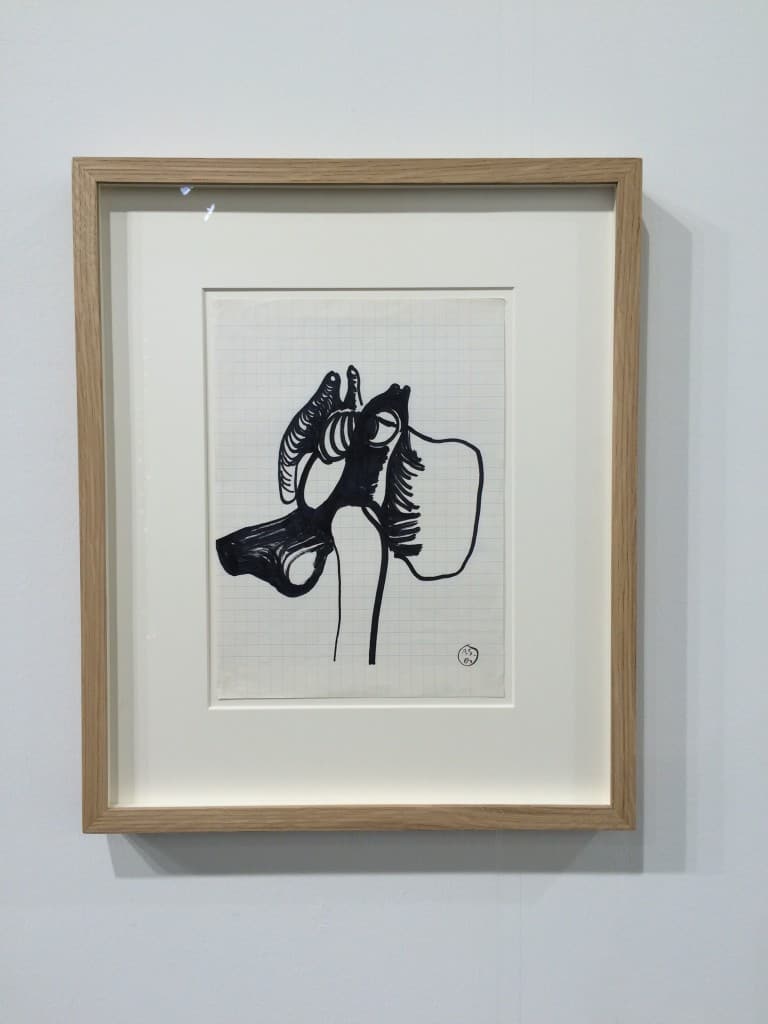
Alina Szapocznikow, Untitled, 1964, Art Basel 2016, photo Contemporary Lynx
The painting by Wojciech Fangor was also sold at a high price. This artist, who was a highlight at last year’s Frieze in London, was represented by The Mayor Gallery and his work was offered for 300 000 EUR.

Wojciech Fangor, Mayor Gallery, Art Basel 2016, photo Contemporary Lynx
We also know that the Starmach Gallery sold all the reliefs by Henryk Stażewski displayed at its stand. Not only was this selection of works outstandingly beautiful and utterly subtle, but also eye-catching with its marvellous combinations of colours. They were created in the best period of the artist’s activity, i.e. in the late 60s and the 70s. On the stand of Andrzej Starmach’s gallery, who is the fair’s regular participant and one of the most famous art collectors in Poland, we found objects by Edward Krasiński (who will soon have his exhibition in Tate Liverpool), drawings from the late 30s and 40s by Władysław Strzemiński, a beautiful three-dimensional painting-object by Ryszard Winiarski, two works by Marian Warzecha — one of the founders of the famous Krakow Group, which played a huge role in the history of post-war art in Poland, as well as the icing on the cake — “Abakan” by Magdalena Abakanowicz.
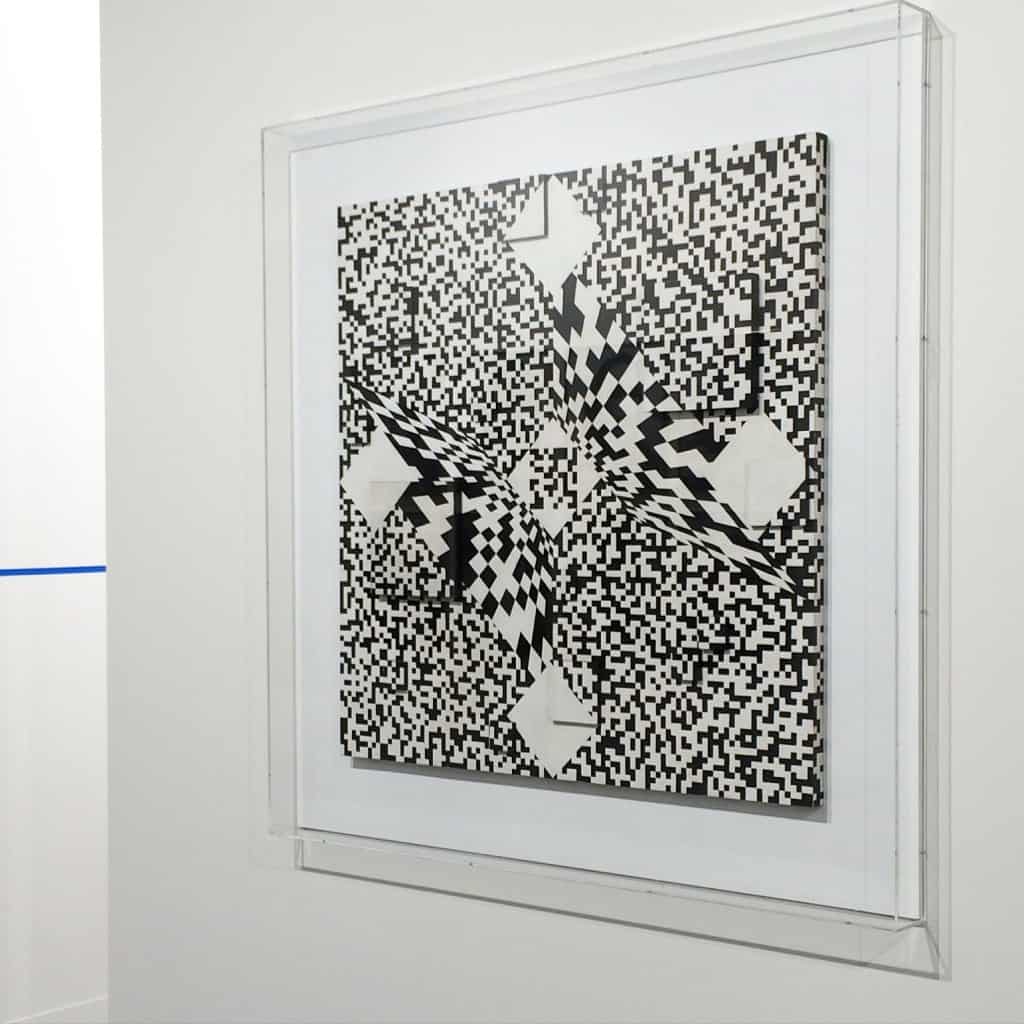
Stanisław Winiarski, Starmach Gallery, Art Basel 2016, photo Contemporary Lynx

Edward Krasiński, Starmach Gallery, Art Basel 2016, photo Contemporary Lynx
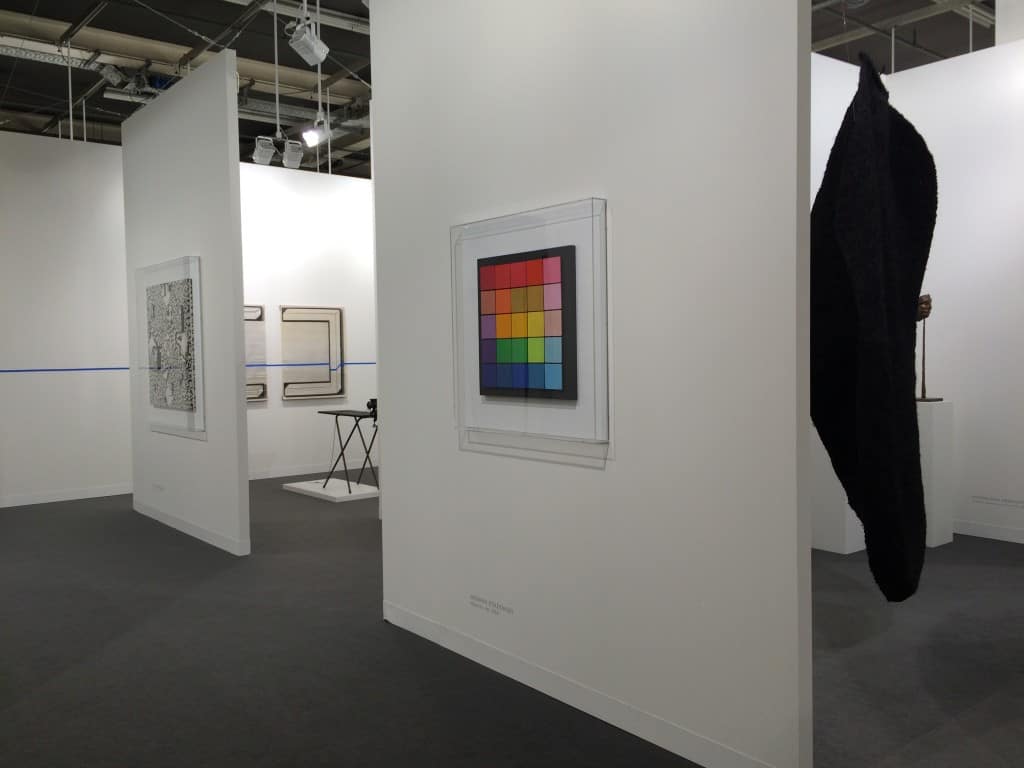
Edward Krasiński, Henryk Stażewski, Magdalena Abakanowicz, Starmach Gallery, Art Basel 2016, photo Contemporary Lynx

Marian Warzecha, Starmach Gallery, Art Basel 2016, photo Contemporary Lynx
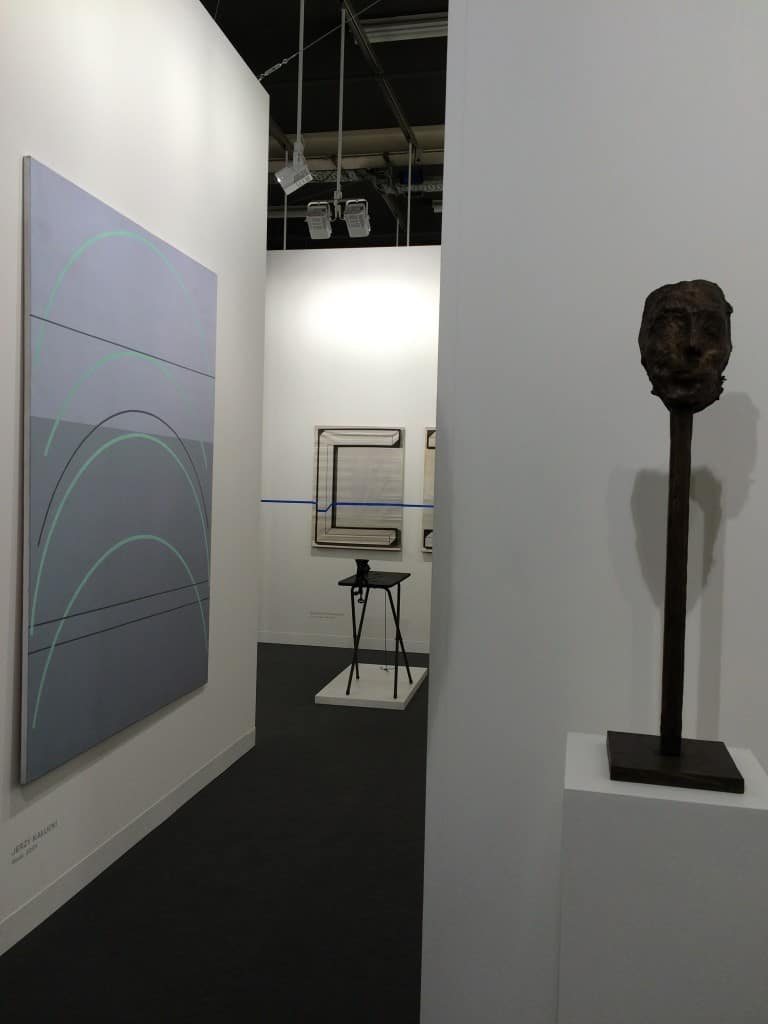
from the right: Jerzy Kałucki, Magdalena Abakanowicz, Art Basel 2016, photo Contemporary Lynx
One of the works by this artist, a large-size installation, is currently being displayed in the newest building at Tate Modern — Switch House – and has been named one of the most prominent objects of the latest Tate collection. At Art Basel fair, works by Abakanowicz could be seen at the stand of Marlborough Fine Art. Last fall, this New York gallery organised a big solo exhibition presenting an overview of her artistic activity. In Basel, it devoted 1/3 of the space available to it to a group of bronze walking figures. On the other side of the stand, a huge, over three-meter sculpture by this artist entitled: “The Second Never Seen Figure on Beam with Wheels” from 2001, was presented.

Magdalena Abakanowicz, Marlborough Fine Art, Art Basel 2016, photo Contemporary Lynx

Magdalena Abakanowicz, Marlborough Fine Art, Art Basel 2016, photo Contemporary Lynx
Works by doyens of Polish art were also presented by Berlin’s Galerie Berinson. Just as it is every year, on their stand we could see paintings by Samuel Szczekacz and a series of photographs by Stanisław Witkacy. Another traditional element was a painting by Piotr Uklański at the stand of Massimo de Carlo.
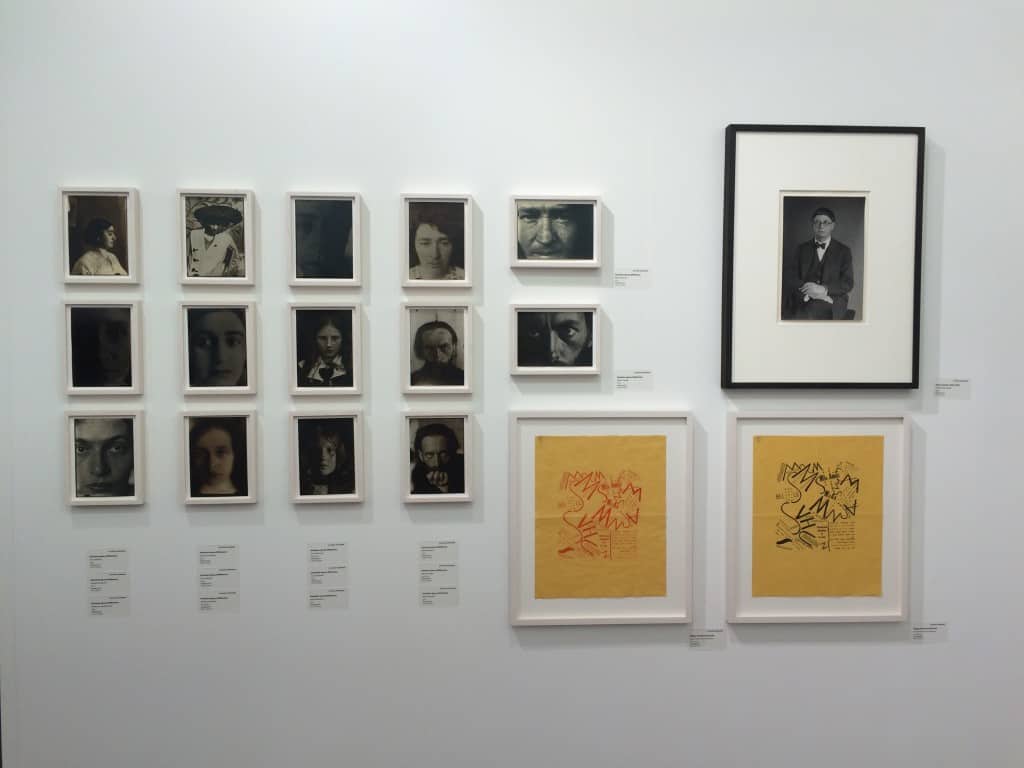
Stanisław Ignacy Witkiewicz “Witkacy”, Galerie Berinson, Art Basel 2016, photo Contemporary Lynx
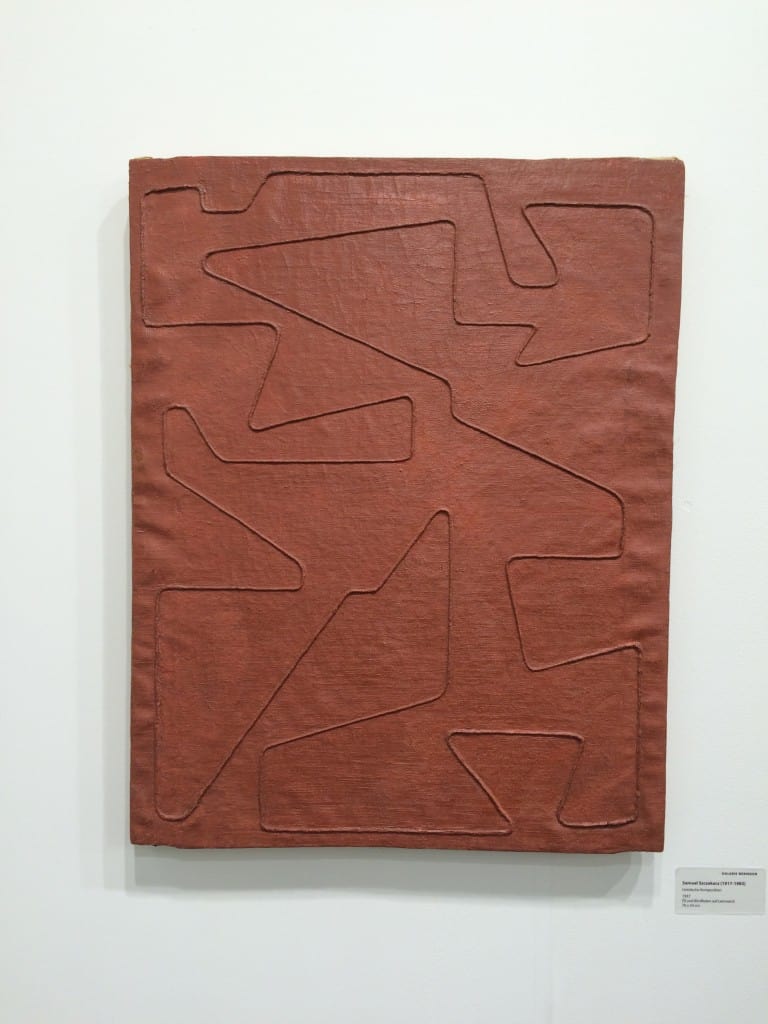
Samuel Szczekacz, Galerie Berinson, Art Basel 2016, photo Contemporary Lynx
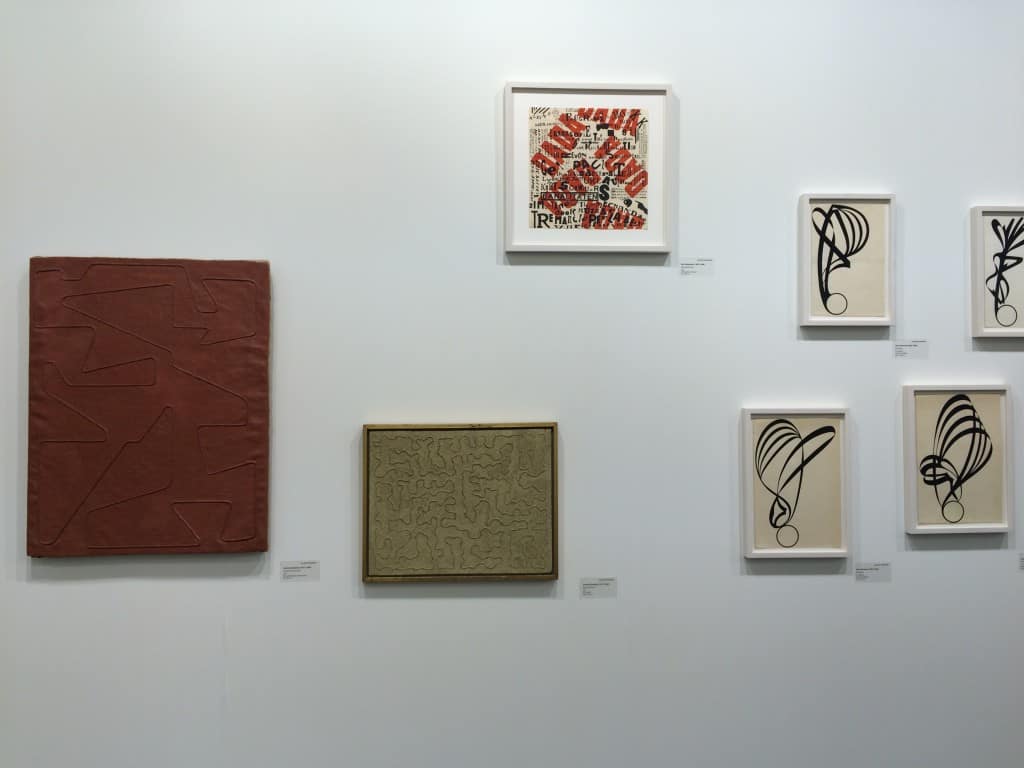
Galerie Berinson, Art Basel 2016, photo Contemporary Lynx

Paweł Uklański, Massimo de Carlo Gallery, Art Basel 2016, photo Contemporary Lynx
Numerous works by Mirosław Bałka were also presented by galleries who permanently cooperate with this artist. His works were also found at the stand of Dvir and Nordenhake galleries. The latter one also presented a painting by Michał Budny, which, as usual, attracted the audience’s attention with the subtlety of material used in it and compositional nuances, as well as subsequent layers which can only be noticed after looking at the painting carefully and which add spatial dimensions to it. Another work which is in sharp contrast to the work just mentioned could be found at the stand of Galerie nächst St. Stephan Rosemarie Schwarzwälder from Vienna — a big black plastic object, which refers to post-minimalist experiments. And if we are talking about objects, there are three more artists who could not have been absent at the fair.

Mirosław Bałka, DVIR, Art Basel 2016, photo Contemporary Lynx

Mirosław Bałka, DVIR, Art Basel 2016, photo Contemporary Lynx

Mirosław Bałka, Teleportation Tube”, 2015, Art Basel 2016, photo Contemporary Lynx
Followers of the activities of Goshka Macuga and her latest exhibitions could see works belonging to a series presented in New Museum at the stands of the Anton Kreps Gallery; Galerie Rüdiger Schöttle. Piotr Łakomy‘s objects and installations were presented by Stereo Gallery at Art Statements section (Statements presents exciting new solo projects by emerging artists. This was the first time when Stereo Gallery took part at Art Basel fair).
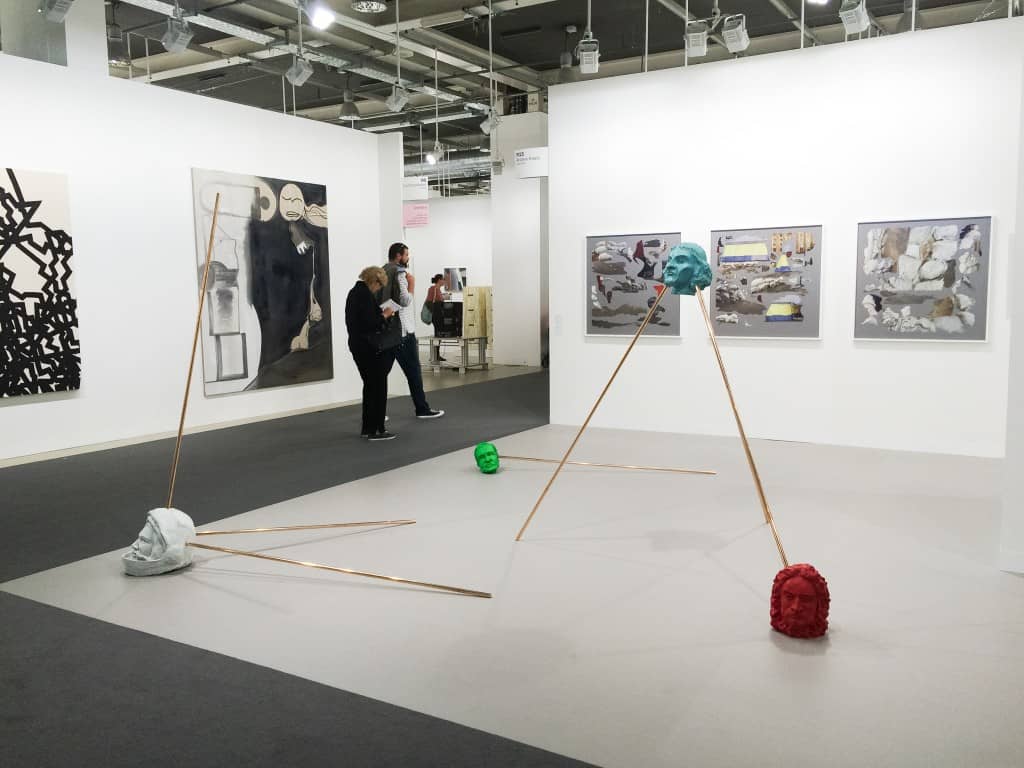
Goshka Macuga, Art Basel 2016, photo Contemporary Lynx

Piotr Łakomy, Stereo Gallery, Art Basel 2016, photo Contemporary Lynx
Monika Sosnowska presented a sculpture which resembled bent and tangled barriers and railings (just as our tangled memory) at the stand of Galerie Gisela Captain and two new objects at the stand of the Foksal Gallery Foundation. As usual, this gallery cared about beautiful arrangement and presented an overview of the top names among Polish modernist artists: Edward Krasiński, Erna Rosenstein, and when it comes to the younger generation to which Sosnowska belongs, two paintings by Paulina Ołowska, paintings by Jakub Julian Ziółkowski, a painting by Wilhelm Sasnal (his work was also presented in the Sadie Coles gallery, which recently organised his solo exhibition and in Hauser&Wirth Gallery), as well as a sculpture by Paweł Althamer.
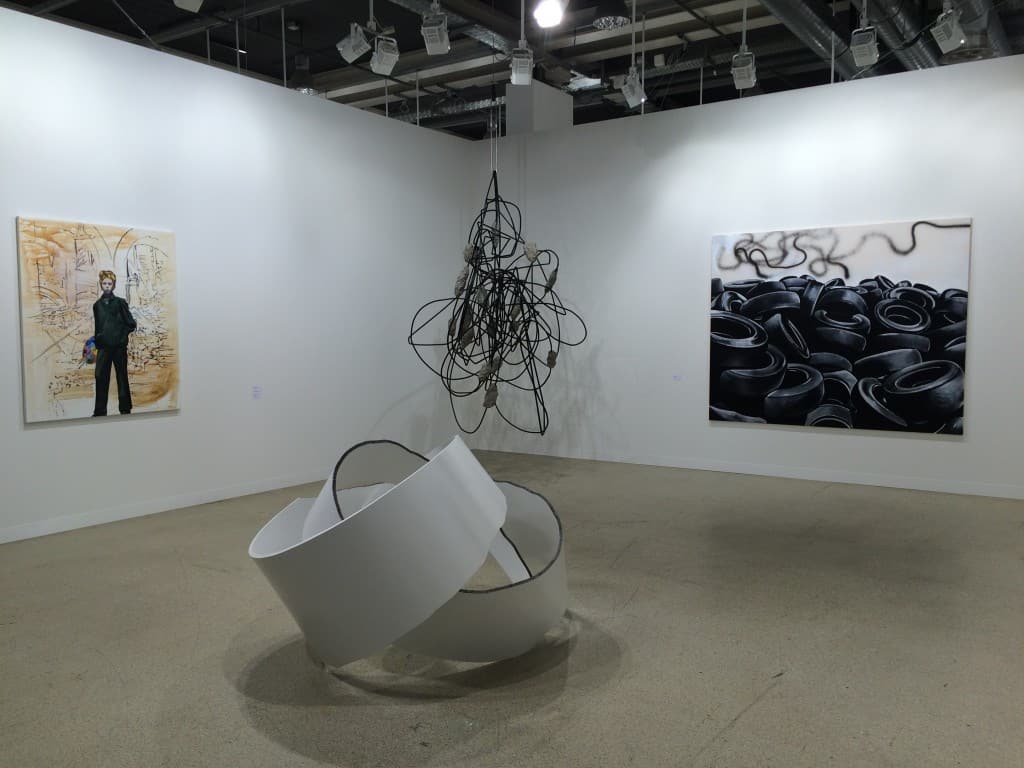
from the left: Paulina Ołowska, Monika Sosnowska, Wilhelm Sasnal, Foksal Gallery Foundation, Art Basel 2016, photo Contemporary Lynx

Jakub Julian Ziółkowski, Foksal Gallery Foundation, Art Basel 2016, photo Contemporary Lynx
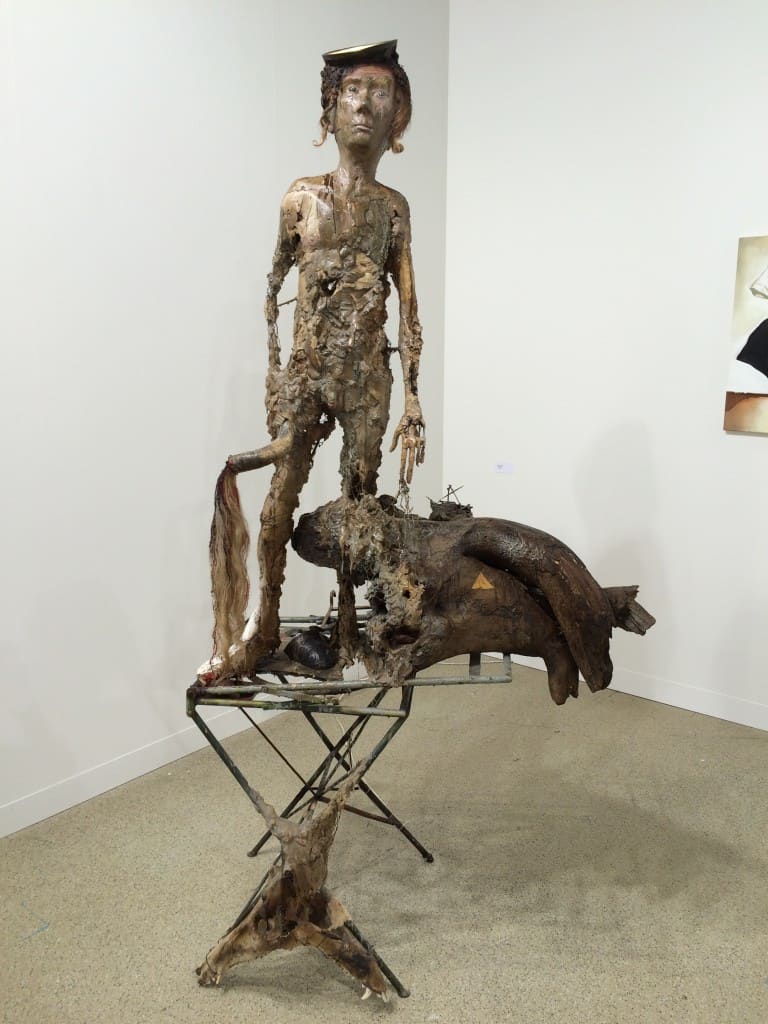
Paweł Althamer, Fokal Gallery Foundation, Art Basel 2016, photo Contemporary Lynx

Edward Krsiński, Foksal Gallery Foundation, Art Basel 2016, photo Contemporary Lynx
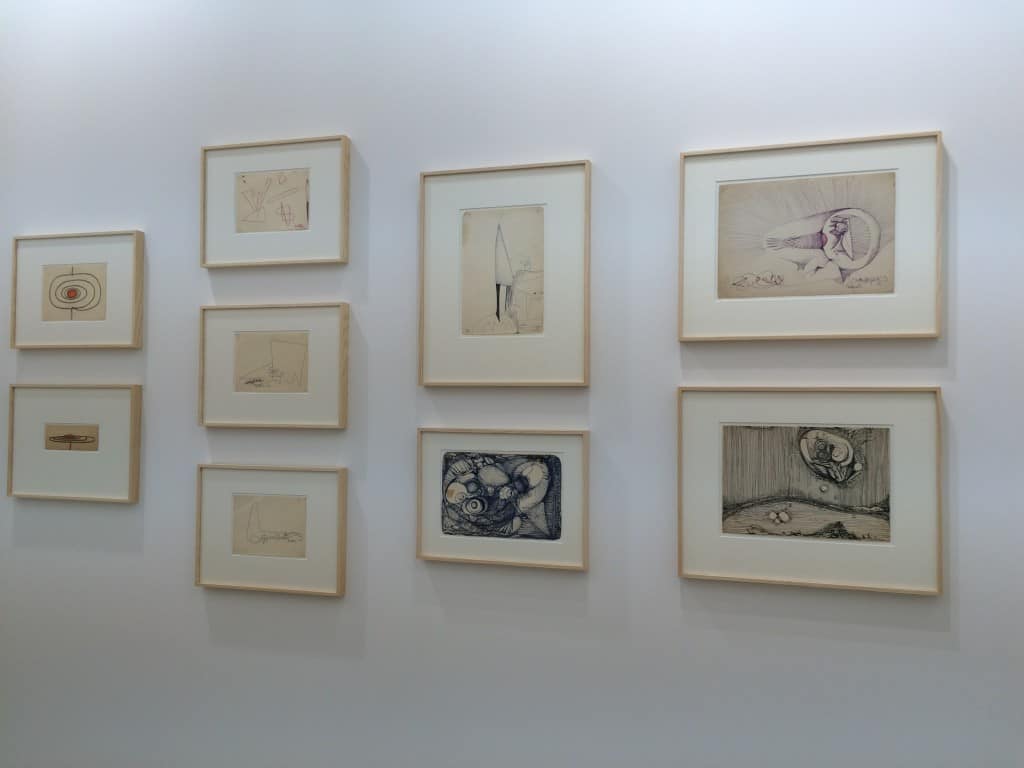
Erna Rosenstein, Foksal Gallery Foundation, Art Basel 2016, photo Contemporary Lynx
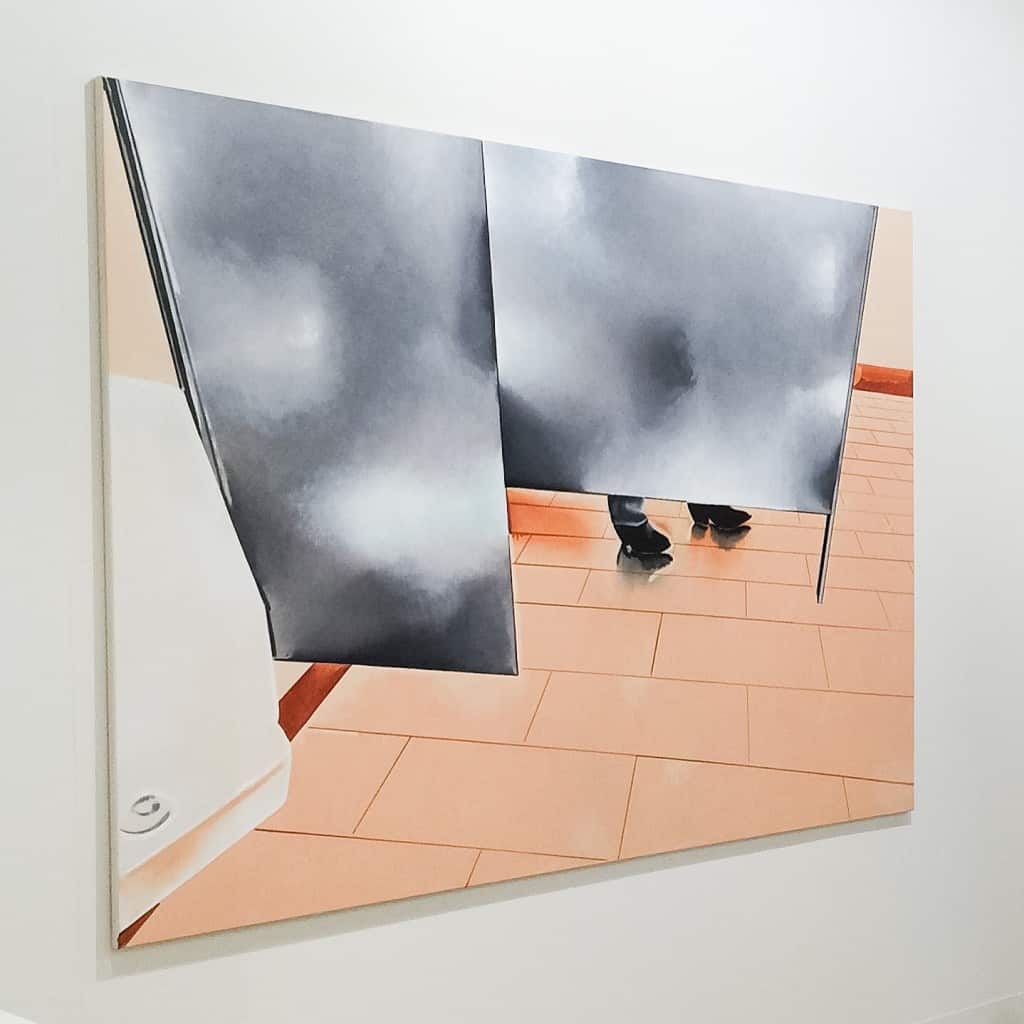
Wilhelm Sasnal, Sadie Coles Gallery, Art Basel 2016, photo Contemporary Lynx
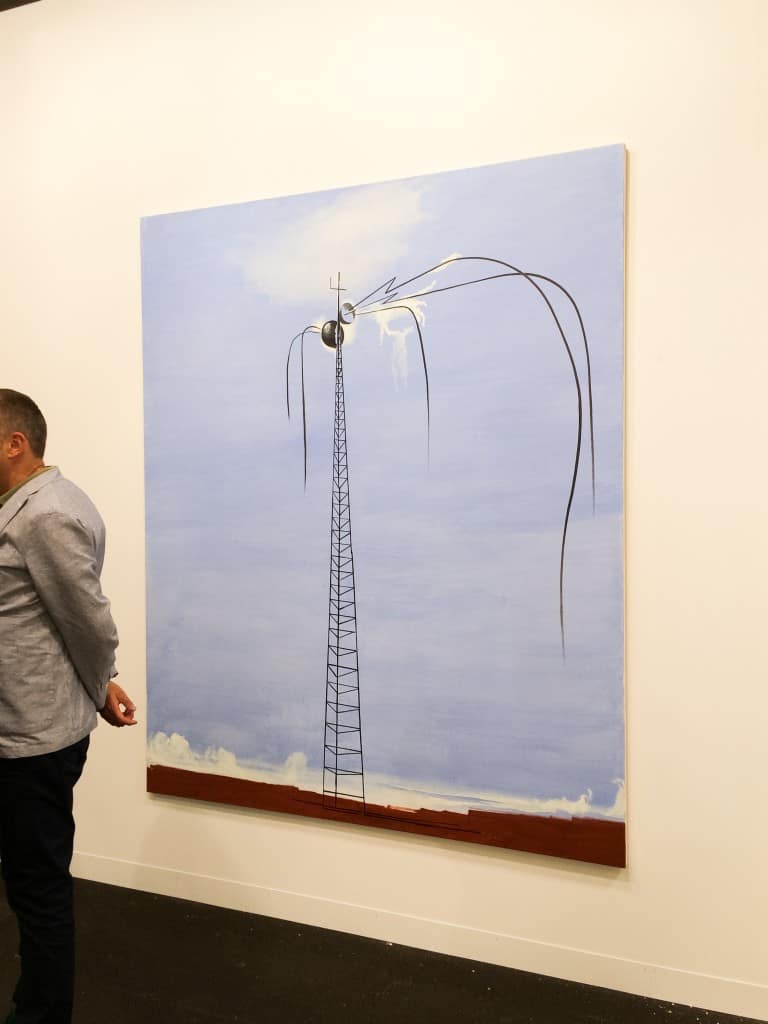
Wilhelm Sasnal, Hauser&Wirth, Art Basel 2016, photo Contemporary Lynx
Works by Alicja Kwade were presented by 303 Gallery, Galerie Johann König and galerie kamel mennour. Apart from the works presented at gallery stands, her installation displayed at Art Unlimited is also worth looking at. This large-sized object probably attracted the attention of every visitor and provoked them to actively engage in an interaction — to come near, closely look at the materials used, walk around the installation and, thereby, try to evaluate the possibilities of developing an objective perspective on the surrounding reality with the help of our imperfect senses, capabilities and methods of learning, as well as determining what is real and what only seems real to us.
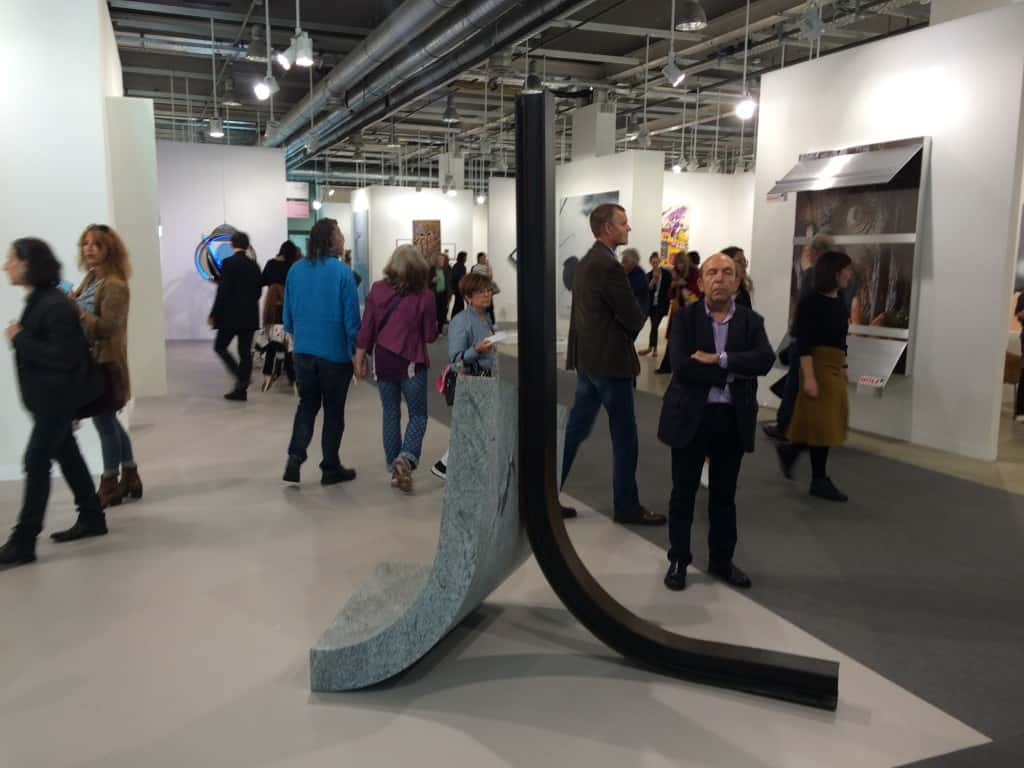
Alicja Kwade, “Force”, 2015, 303 Gallery, Art Basel 2016, photo Contemporary Lynx

Alicja Kwade, Galerie Johann König, Art Basel 2016, photo Contemporary Lynx
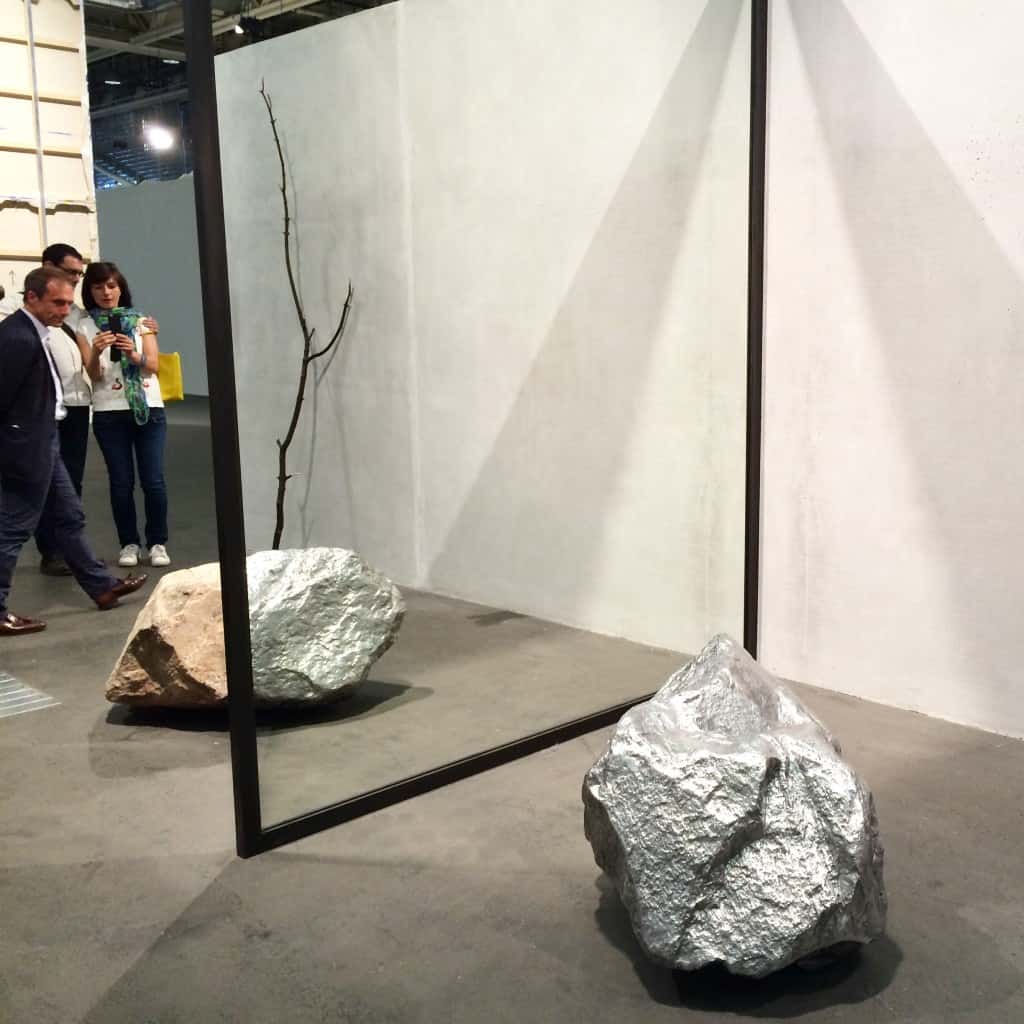
Alicja Kwade, Art Unlimited, Art Basel 2016, photo Contemporary Lynx
So, that is enough of art talk… Let’s now have a look at #artselfie.
We chose this selfie, which, in our opinion, was taken next to one of the most interesting works at Art Unlimited and the whole Art Basel fair.
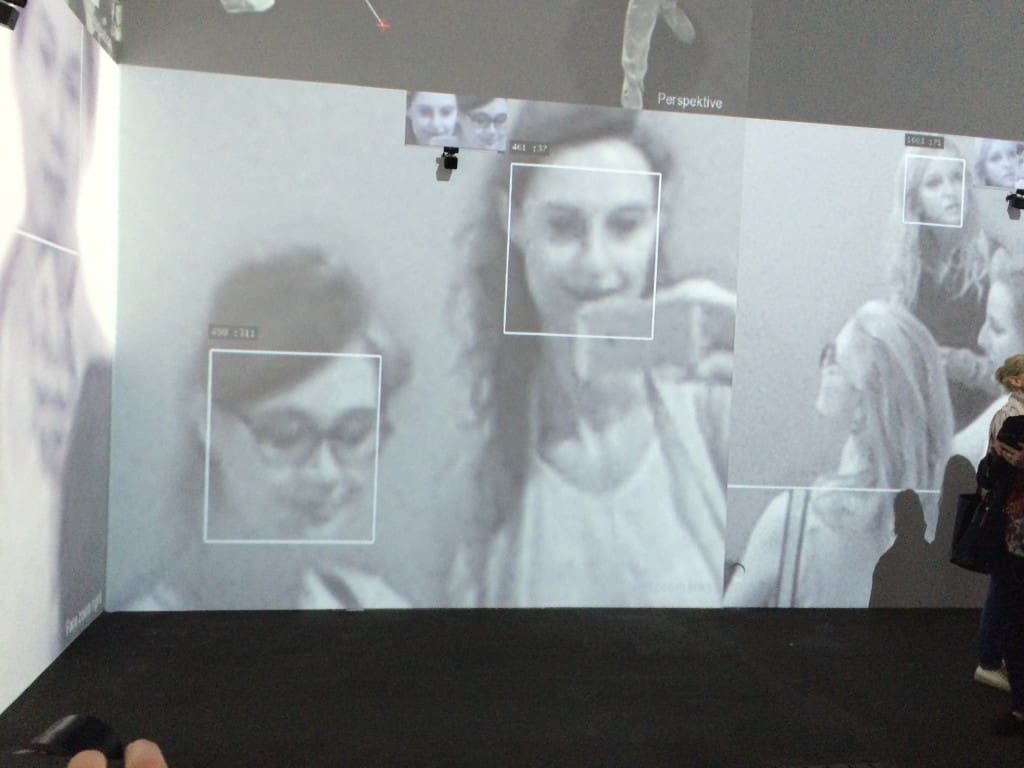
Rafael Lozano-Hemmer and Krzysztof Wodiczko, “Zoom Pavilion”, Art Unlimited, Art Basel 2016, photo Contemporary Lynx
The selfie shows the work “Zoom Pavilion” by Rafael Lozano-Hemmer and Krzysztof Wodiczko, which deals with control, observation and supervision over every step a human being takes in the temporary world. Upon entering the space provided for this installation, one was torn between conflicting emotions. At the beginning, faces of joyous people taking pictures of this work could be seen. However, after a while we noticed that they were actually taking pictures of themselves… Rows of cameras recorded the visitors’ faces non stop. Later on, they displayed these pictures on the walls, which the audience eagerly watched. This was not just supposed to be for fun… pictures were archived in a database, which could also partially be seen on the entrance/exit wall, but only after an enthusiastic visitor who attracted camera attention and took many pictures of himself turned around to leave the room. At that moment he understood that everything was registered and archived and what happened was not just for the sake of entertainment.

Rafael Lozano-Hemmer and Krzysztof Wodiczko, “Zoom Pavilion”, Art Unlimited, Art Basel 2016, photo Contemporary Lynx
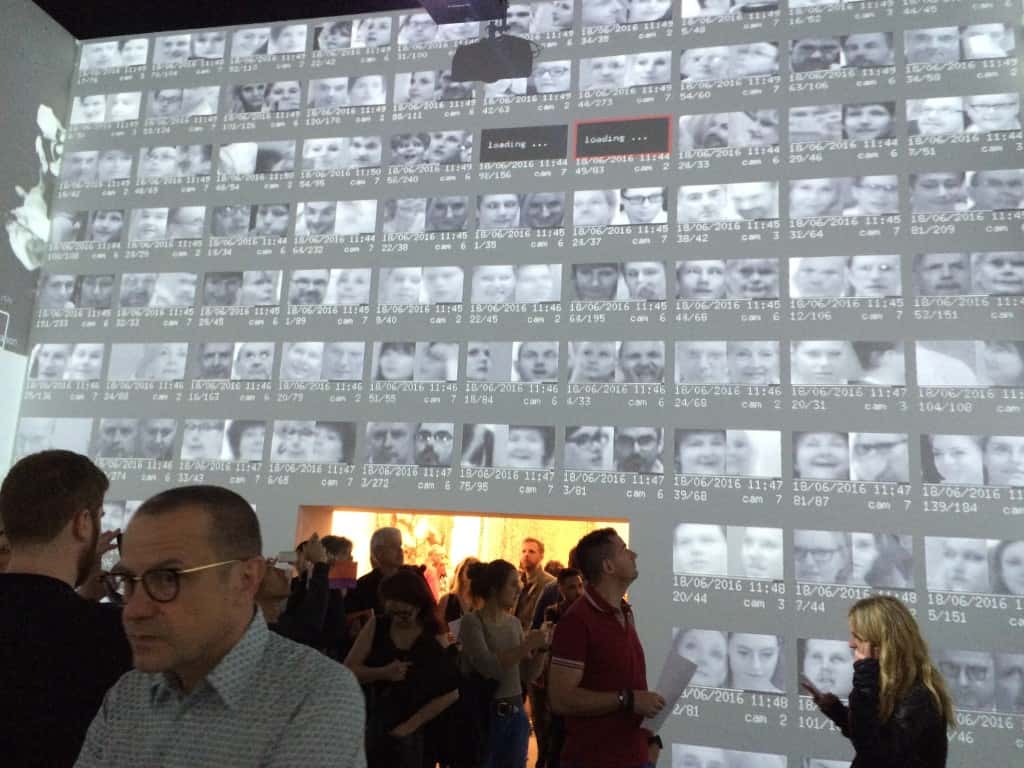
Rafael Lozano-Hemmer and Krzysztof Wodiczko, “Zoom Pavilion”, Art Unlimited, Art Basel 2016, photo Contemporary Lynx
This perfectly depicted the dualism of our world. On the one hand, we are afraid of constant supervision, control as discussed by Orwell is hideous and unacceptable to us and we want to break free from it. On the other hand, we dream of being noticed as a person and distinguishing ourselves from the crowd. We create our identity in the media and, in this way, we subject ourselves to the same control mechanisms and make ourselves clearly visible. Data means knowledge, and knowledge is a reliable capital, also in financial terms, which puts us in a huge and powerful capitalistic machine. It does not matter then whether we are single “visitors” or a huge international gallery spending millions of dollars.








![ŁUSKA [Scale] performance, Justyna Górowska](https://static.contemporarylynx.co.uk/wp-content/uploads/2018/10/Luska-Justyna-Górowska.jpg)


